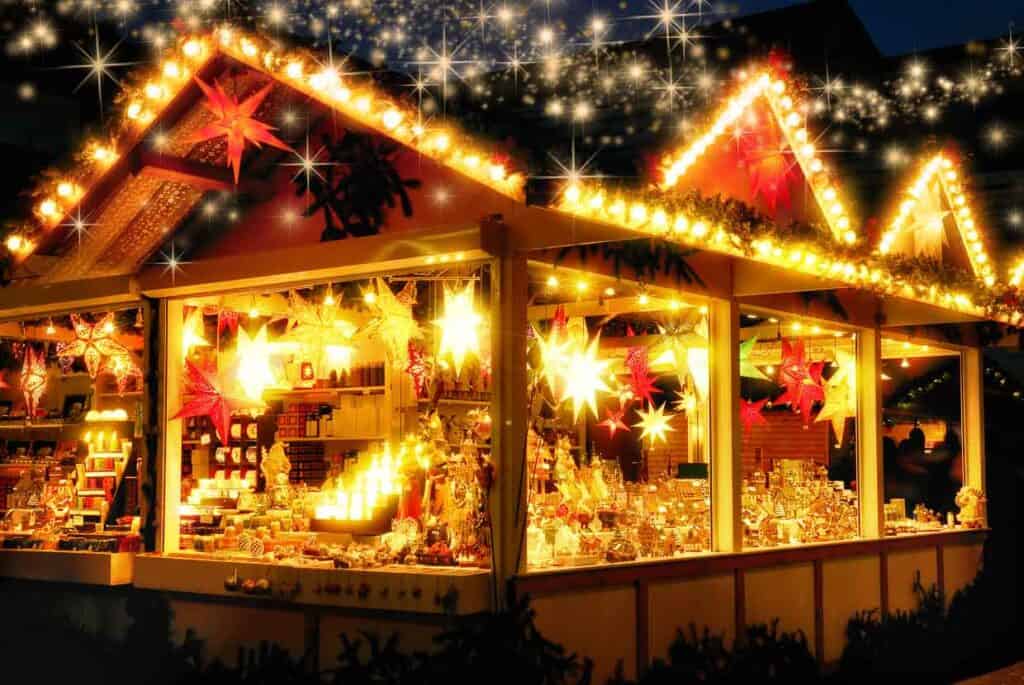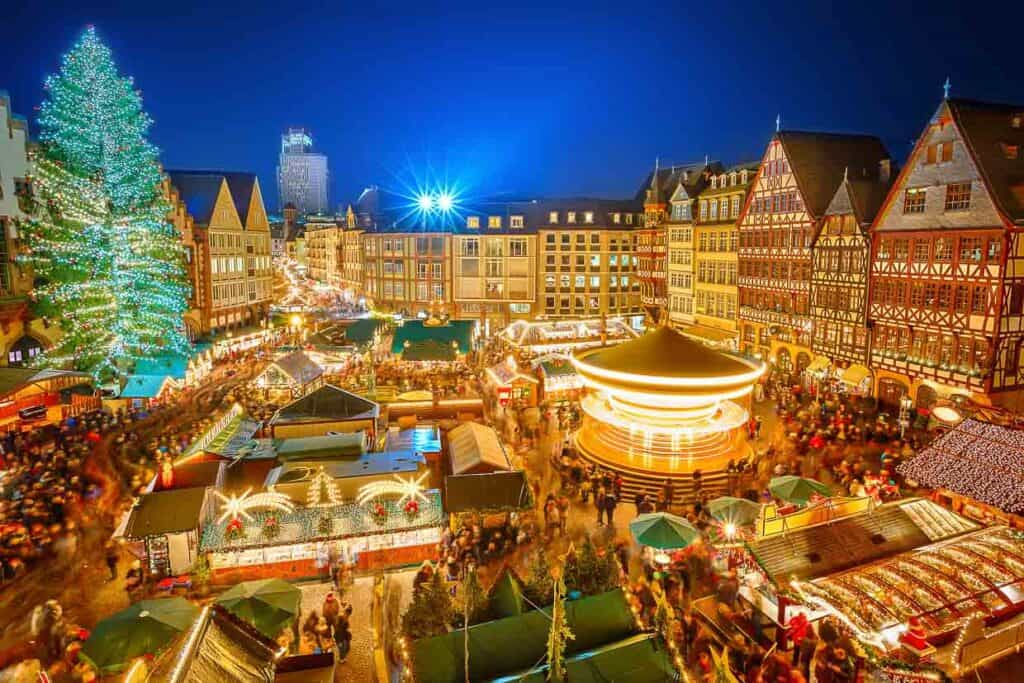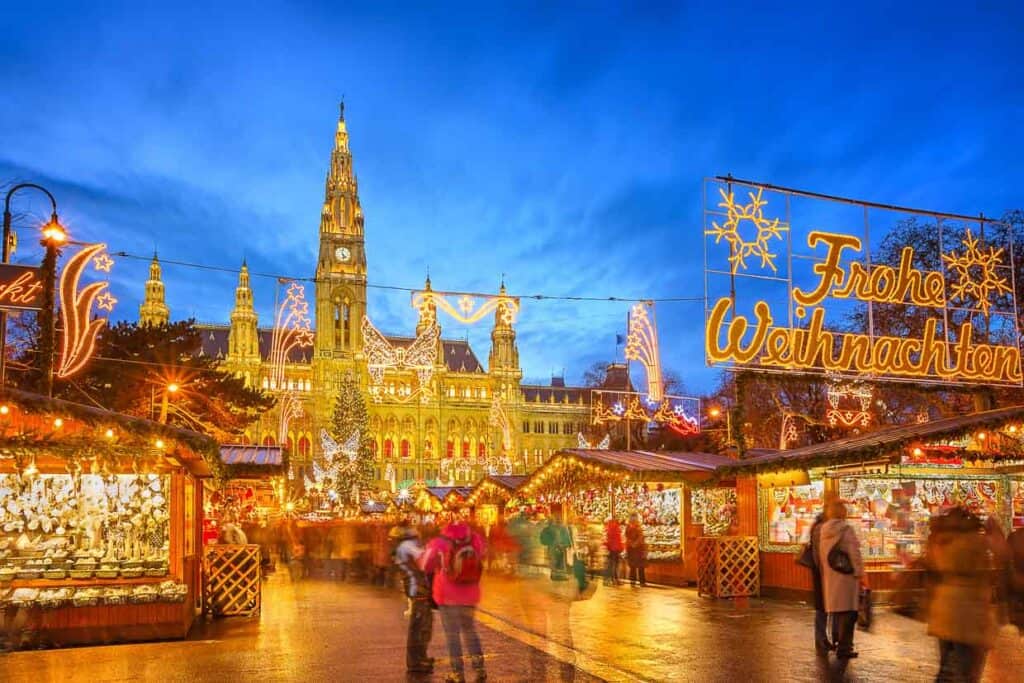European Christmas markets are some of the most enchanting and festive holiday destinations in the world. These markets are a centuries-old tradition that originated in Germany and have since spread throughout Europe. Each year, millions of visitors flock to cities like Vienna, Brussels and Strasbourg to experience the magic of these markets firsthand.

You can expect to find various handmade crafts, gifts and traditional holiday treats like gingerbread and mulled wine at any Christmas market. The markets are typically held in the historic town squares of each city, which are transformed into winter wonderlands with twinkling lights, festive decorations and the scent of roasted chestnuts in the air. You can also enjoy live music, ice skating and other holiday-themed activities.
Whether you’re looking for unique gifts or simply want to soak up the festive atmosphere, European Christmas markets are the perfect destination. With so many different markets to choose from, each with its own unique charm and traditions, there’s something for everyone to enjoy.
History of European Christmas markets
European Christmas markets have a long history dating back to the Late Middle Ages in the German-speaking parts of Europe. The markets were originally called “Christkindlmarkt” or “Weihnachtsmarkt,” which translates to Christ child market or Christmas market.
These markets were established to provide people with the opportunity to purchase goods for the winter season, such as food, drink and warm clothing; they were also a place for people to gather and celebrate the holiday season.
Over time, they spread throughout Europe and became an important part of the holiday season. Today, there are thousands of Christmas markets throughout Europe, each with its own unique traditions and specialties.
In addition to providing a festive atmosphere and a place to shop for holiday gifts, these also preserve local traditions and promote regional products. Many markets feature handmade crafts, local foods and traditional music and dance performances.

Famous Christmas markets in Europe
With thousands of markets throughout Europe, there are markets in France, Austria, Belgium and Germany that you should put on your Christmas bucket list.
Strasbourg, France
Strasbourg is known as the Capital of Christmas. The city’s Christmas market is one of the oldest and largest in both France and Europe and dates back to 1570. It’s held in the city’s historic district, home to the famous Strasbourg Cathedral. You can expect to find over 300 stalls selling traditional crafts, food and drinks. The market also features a giant Christmas tree, an ice skating rink and a nativity scene.
Vienna, Austria
This Christmas market is one of the most famous in Europe. It’s held in front of the City Hall, which is transformed into a giant Advent calendar. In Vienna, you can expect to find over 150 stalls selling traditional Austrian crafts, food and drinks. The market also features a giant ice skating rink, a carousel and a nativity scene. One of the market’s highlights is the daily concerts by choirs and orchestras.
“Christmas markets in Vienna are on our weekly schedule throughout the whole season. Meeting friends and exploring various locations around Vienna with a glass of mulled wine or punch, roasted chestnuts and Kaiserschmarrn is what the family looks forward to and dreams of throughout the year.”
— Zuzana Paar, Lowcarb-Nocarb

Brussels, Belgium
Brussels’ Christmas market is held in the city’s historic Grand-Place. The market features over 200 stalls selling traditional Belgian crafts, food and drinks. You can expect to find everything from waffles to chocolate to mulled wine. The market also features a giant Christmas tree, an ice skating rink and a Ferris wheel. One of the market’s highlights is the sound and light show that takes place every evening.
Dresden, Germany
Dresden’s Christmas market is one of the oldest in Germany, dating back to 1434. The market is held in the city’s historic Altmarkt Square. You can expect to find over 250 stalls selling traditional German crafts, food and drinks. They might not have the Christmas cookies you’re used to, but you will find the most delicious lebkucken, which is a German biscuit similar to a cookie.
The market also features a giant Christmas pyramid, an ice skating rink and a nativity scene. One of the highlights of the market is the Stollen festival, where a giant Stollen — a traditional German Christmas cake — is paraded through the city.
“Entering a German Christmas market is like walking into a fairytale! The smells, lights, sounds and textures all make it look like a scene from the Nutcracker. it’s a perfect place to feel like you’re living the European dream!”
— Ksenia Prints, At the Immigrant’s Table.
Other European Christmas markets to consider: Nuremberg, Germany; Cologne, Germany; Prague, Czech Republic; Munich; Germany; Budapest, Hungary; Copenhagen, Denmark; Stockholm, Sweden; Tallinn, Estonia; Krakow, Poland; Riga, Latvia; Zurich, Switzerland; Manchester, United Kingdom; Lille, France; Florence, Italy; and Helsinki, Finland.
Planning your visit
When is the Christmas market season, and what should you think about when planning a trip to see them?
Best time to visit
The markets usually open in late November and continue until Christmas Eve. The timing of your visit will depend on your preferences. If you want to avoid crowds, it’s best to visit during the weekdays, as weekends are typically busier. If you’re looking for a more festive atmosphere, visiting during the weekends might be a better option.
It’s important to note that the weather can be unpredictable during the winter months. It’s best to pack warm clothing, including a hat, gloves and a scarf. It’s also a good idea to wear comfortable shoes, as the streets can be slippery.

Book early
As the markets are so popular, many people make either a long weekend or even a week of them, so the flights and hotels can get booked up very early, especially in the larger cities. Plan and book your trip as early as possible to avoid disappointment.
Travel tips
When planning your visit to the European markets, there are a few things to keep in mind. First, it’s important to research the markets you want to visit. Each market has its own unique atmosphere and offerings. Some markets are known for their food and drink, while others are known for their crafts and gifts.
Second, it’s important to consider transportation. Many of the Christmas markets are located in city centers, which can be difficult to navigate by car. It’s often easier to use public transportation or walk to the markets.
Third, it’s essential to have cash on hand. While some vendors might accept credit cards, many only accept cash in the local currency. It’s also a good idea to have small bills and coins, as some vendors might not be able to make change for larger bills.
Finally, it’s a good idea to be aware of your surroundings and keep your belongings close. Christmas markets can be crowded, making it easier for pickpockets to operate. It’s best to keep your wallet and phone in a secure pocket or bag.
European Christmas markets are a wonderfully festive experience and what memories are made of. The key to an enjoyable trip is in the planning; carefully research which market you’d like to visit, decide when you want to visit it and book your trip as early as possible. If you do this, then you are in store for a magical experience.
Mandy is the enthusiastic creator of the vegetarian website Splash of Taste; she makes meat-free cooking fun and easy. When Mandy’s not cooking and writing, you’ll find her traveling, exploring countries and cuisines and spending time with her chihuahua. Download her free 5 x Easy Vegetarian Meals eBook.